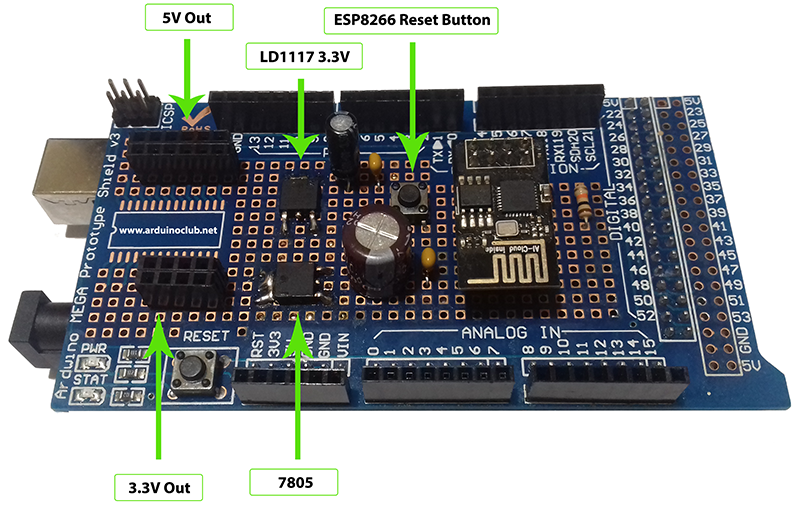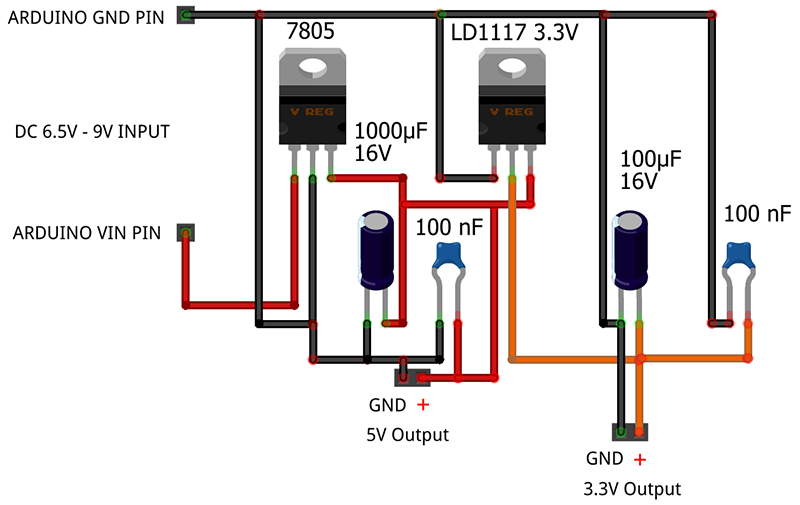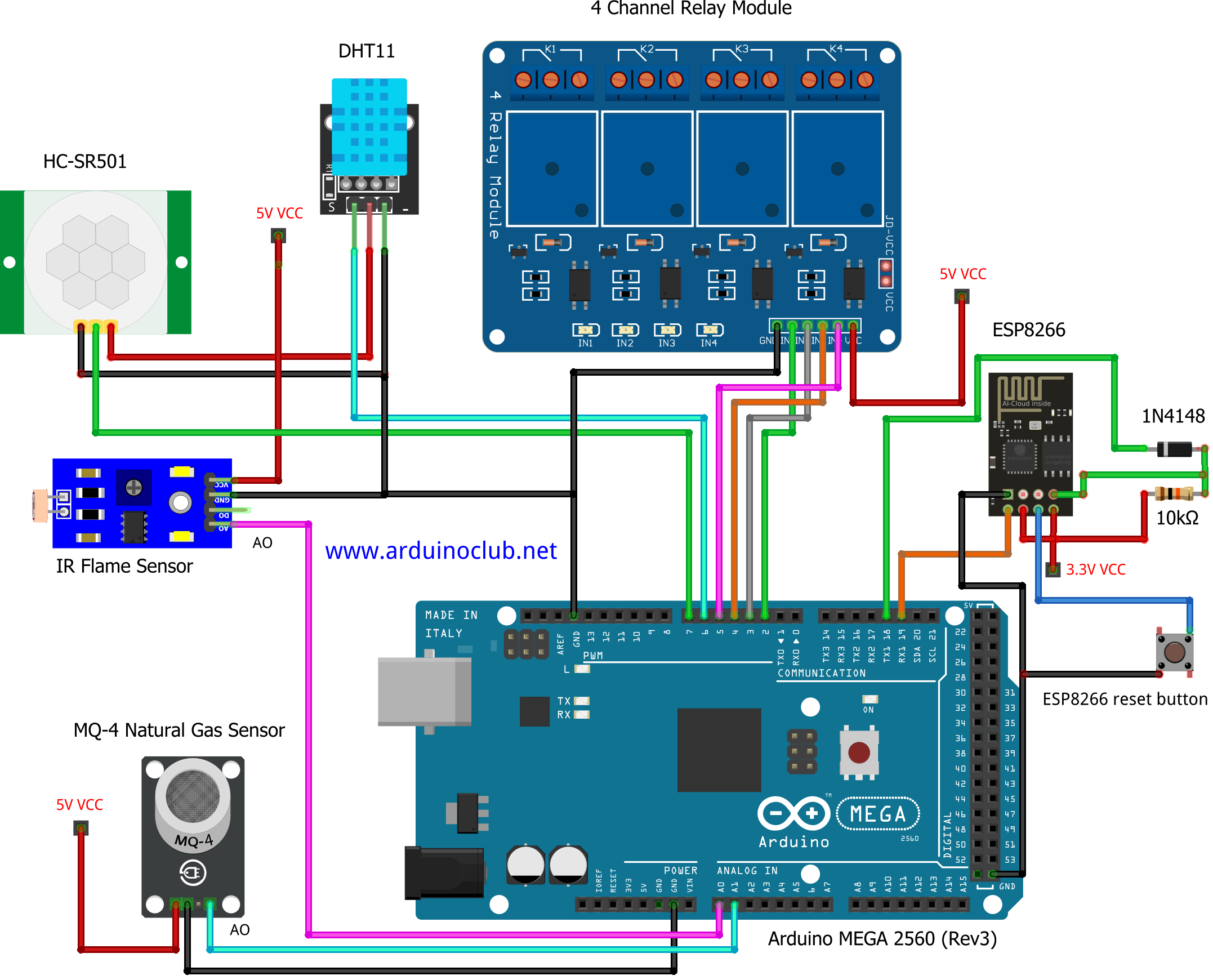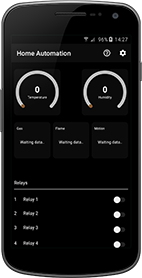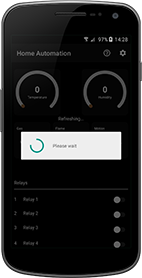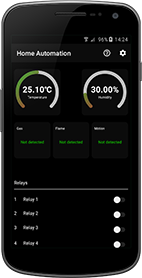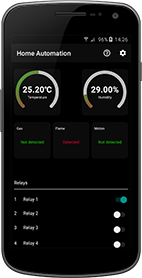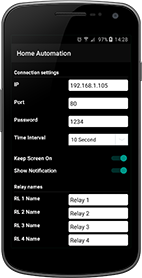Arduino mega 2560 wifi esp8266 datasheet
You can watch DHT11 data (Humidity and Temperature), IR Flame Sensor, MQ-4 Natural Gas Sensor, HC-SR501 PIR Motion Dedector and control 4 Channel Relay Module over internet/network with Android App. We use ESP8266-01 WiFi module for wireless comminication.
Required Main Parts
- Arduino MEGA 2560 (Rev3)
- ESP8266-01 WiFi module (If you need update your ESP8266 Firmware please check ESP8266 Firmware update page)
- DHT11 Humidity and Temperature sensor
- IR Flame Sensor
- MQ-4 Natural Gas Sensor
- HC-SR501 PIR Motion Dedector
- 4 Channel Relay Module
- Any Android device
Project Details
We use ESP8266-01 WiFi module for wireless comminication.
We need two libraries for read DHT11:
DHT Sensor Library: https://github.com/adafruit/DHT-sensor-library
Adafruit Unified Sensor Lib: https://github.com/adafruit/Adafruit_Sensor
We need WiFiEspAT library for ESP-01 module:
WiFiEspAT: https://github.com/jandrassy/WiFiEspAT
We need ArduinoJson library for serialize Json data:
ArduinoJson: https://arduinojson.org/
You can install all these libraries from Library Manager in your Arduino IDE
We use external DC power adaptor for Arduino and power circuit for sensors, 4 Channel Relay Module and ESP-01 module. We use Arduino mega 2560 r3 proto shield for power circuit and ESP-01 module.
Shopping List
| Amount | Part Type |
|---|---|
| 2 | 100nF/16V Ceramic Capacitor |
| 1 | 1000μF/16V Electrolytic Capacitor |
| 1 | 100μF/16V Electrolytic Capacitor |
| 1 | 7805 5V Voltage Regulator |
| 1 | LD1117 3.3V Voltage Regulator |
| 1 | Female Header |
Power Circuit
Shopping List
| Amount | Part Type |
|---|---|
| 1 | Arduino Mega 2560 (Rev3) |
| 1 | 4 Channel Relay Module |
| 1 | 1N4148 Diode |
| 1 | DHT11 Temperature & Humidity Sensor Module |
| 1 | HC-SR501 Motion Sensor Module |
| 1 | IR Flame Sensor Module |
| 1 | MQ-4 Natural Gas Sensor Module |
| 1 | ESP8266 (ESP-01) WiFi Module |
| 1 | 10kΩ Resistor |
| 1 | Pushbutton |
Circuit
Android APP
Code (arduino_secrets.h)
#define SECRET_SSID "SSID" // Your SSID #define SECRET_PASS "SSIDPASS" // Your SSID PasswordCode (HomeAutomation.ino)
/********************************************************************** * For projects details and circuit scheme please visit: * * https://www.arduinoclub.net/arduinomega-2560-home-automation.html * *********************************************************************/ // Include WiFiEspAT library #include // Include EEPROM library #include // Include SSID information (arduino_secrets.h) file #include "arduino_secrets.h" // Include Adafruit DHT11 Sensor Library #include "DHT.h" // DHT11 pin #define DHTPIN 6 #define DHTTYPE DHT11 DHT dht(DHTPIN, DHTTYPE); // ArduinoJson #include StaticJsonDocument doc; // Don't change from here. Please edit from arduino_secrets.h file const char ssid[] = SECRET_SSID; // Your SSID (use arduino_secrets.h for change) const char pass[] = SECRET_PASS; // Your SSID Password (use arduino_secrets.h for change) // Password for connection requests. You can change your connection password from this variable. char* password = "1234"; // Relay pins int relays[] = ; // HC-SR501 PIR Sensor pin int hcSr501 = 7; int motionState = 0; int EepromMotionState; // Flame sensor pin int flameSensor = A0; int flameState = 0; int EepromFlameState; // The limit value that the FLAME sensor will define as flame (max value: 1023) int flamethreshold = 200; // MQ-4 gas sensor pin int gasSensor = A1; int gasValue = 0; int EepromGasState; // Limit value that the MQ-4 gas sensor will define as a gas leak (max value: 1023) int gasthreshold = 390; String answer = ""; int bodyFinder = 0; char requestBody[100]; int count; int rState; boolean rlrequest = false; boolean getallrequest = false; #if defined(ARDUINO_ARCH_AVR) && !defined(HAVE_HWSERIAL1) #include SoftwareSerial Serial1(12, 13); // RX, TX #define AT_BAUD_RATE 9600 #else #define AT_BAUD_RATE 115200 #endif WiFiServer server(80); void setup() < // The final position of the relays is adjusted by reading from the EEPROM. for (count = 1; count else < onOff(count, "OFF", false); >> pinMode(hcSr501, INPUT); pinMode(flameSensor, INPUT); pinMode(gasSensor, INPUT); Serial.begin(115200); while (!Serial); // Serial for ESP8266 initializing setEspBaudRate(AT_BAUD_RATE); WiFi.init(Serial1); dht.begin(); if (WiFi.status() == WL_NO_MODULE) < Serial.println(F("ESP8266 not found")); // Operation discontinued because ESP8266 could not be found while (true); >// Connect / reconnect to WiFi network int status = WiFi.begin(ssid, pass); Serial.println(F("Trying to connect to SSID: ")); while (WiFi.status() != WL_CONNECTED) < delay(100); Serial.print('.'); >Serial.println(); // ESP8266 server starting server.begin(); IPAddress ip = WiFi.localIP(); Serial.println(); Serial.println(F("WiFi network connected.")); Serial.print(F("To send a request to the server use \"http://")); Serial.print(ip); Serial.println(F("/\" Link.")); > void loop() < // Checking for an HTTP request WiFiClient client = server.available(); if (client) < IPAddress ip = client.remoteIP(); Serial.print(F("New client: ")); Serial.println(ip); Serial.println(F("-->Request data")); while (client.connected()) < if (client.available()) < // Set variables values to 0 memset(requestBody, 0, sizeof requestBody); bodyFinder = 0; while (client.available()) < char c = client.read(); Serial.write(c); if (bodyFinder != 4) < if (c == '\r' || c == '\n') < // r or n bodyFinder ++; >else < bodyFinder = 0; >> if (bodyFinder == 4 && c != '\n') < strncat(requestBody, &c, 1); >> Serial.println(); Serial.println(F("--> POST data received:")); Serial.println(requestBody); // We divide our POST data received with the strtok() function from the first & character and load it into our token variable char* token = strtok(requestBody, "&"); // Checking whether the first 5 characters are equal to the pass = expression (Parameter) in the received POST request. if (strncmp(token, "pass=", 5) == 0) < // It is the password in the POST request received after the first 5 characters in the token variable (ie after pass =) This password is transferred to the PWD variable char* PWD = token + 5; // Checking the correctness of the password received with the pass parameter in the request. if (strcmp(PWD, password) == 0) < Serial.println(F("-->PASSWORD CORRECT")); while (token != NULL) < token = strtok(NULL, "&"); // Röle if (strncmp(token, "rl=", 3) == 0) < rlrequest = true; if (getallrequest == false) < Serial.print(F("-->rl REQUEST Relay number: ")); int rlNumber = atol(token + 3); Serial.print(rlNumber); Serial.print(F(" Command: ")); char* rlCommand = token + 4; Serial.println(rlCommand); onOff(rlNumber, rlCommand, true); answer = ""; doc["status"] = F("OK"); doc["rl"] = (String)rlNumber; doc["rlcommand"] = (String)rlCommand; serializeJson(doc, answer); > > // getall if (strncmp(token, "getall", 6) == 0) < getallrequest == true; if (rlrequest == false) < Serial.println(F("-->getall REQUEST")); answer = ""; // DHT11 sensor data reading // Temperature in Celsius float t = dht.readTemperature(); char str_t[6]; dtostrf(t, 4, 2, str_t); // Nem float h = dht.readHumidity(); char str_h[6]; dtostrf(h, 4, 2, str_h); // HC-SR501 PIR sensor data is read from address 7 of EEPROM: EepromMotionState = EEPROM.read(7); // FLAME sensor data read from address 8 of EEPROM: EepromFlameState = EEPROM.read(8); // GAS sensor data is read from EEPROM at address 9: EepromGasState = EEPROM.read(9); doc["status"] = F("OK"); doc["temperature"] = (String)t; doc["humidity"] = (String)h; doc["gas"] = EepromGasState; doc["flame"] = EepromFlameState; doc["motion"] = EepromMotionState; // Relays location 1.2.3.4 of the EEPROM. Reading from addresses: // Creating Json array named relays JsonArray relays = doc.createNestedArray("relays"); for (count = 1; count serializeJson(doc, answer); // If the last recorded MQ-4 gas sensor data at the 9th address of the EEPROM is 1, that is, gas is detected, this data is now converted to 0 because it is transmitted to the client.. if (EepromGasState == 1) < EEPROM.update(9, 0); >// If the last recorded PIR sensor data to the 7th address of EEPROM is 1, that is, motion is detected, this data is converted to 0 because it is transmitted to the client. if (EepromMotionState == 1) < EEPROM.update(7, 0); >// If the last recorded FLAME sensor data at the 8th address of EEPROM is 1, that is, flame is detected, this data is converted to 0 because it is transmitted to the client. if (EepromFlameState == 1) < EEPROM.update(8, 0); >> > > > else < Serial.println(F("-->PASSWORD INCORRECT")); answer = ""; doc["status"] = F("ERROR"); doc["message"] = F("Password Incorrect"); serializeJson(doc, answer); > > else < Serial.println(F("-->pass parameter not sent")); answer = ""; doc["status"] = F("ERROR"); doc["message"] = F("pass parameter not sent"); serializeJson(doc, answer); > // When the end of the HTTP header is reached (a blank line), // It means that the HTTP request has reached the end, a response is sent to the request at this stage Serial.println(F("--> Forwarded reply")); Serial.println(answer); // http answer headers client.println(F("HTTP/1.1 200 OK")); client.println(F("Content-Type: application/json; charset=UTF-8")); client.println(F("Connection: close")); // Client is notified that the connection will be closed after the completion of the response client.println(); client.print(answer); client.flush(); rlrequest = false; getallrequest == false; doc.clear(); break; > > // close connection: client.stop(); Serial.println(F("--> Client connection closed")); > // HC-SR501 PIR sensor data reading motionState = digitalRead(hcSr501); // Reading the last record at address 7 of the EEPROM EepromMotionState = EEPROM.read(7); // If the sensor has not detected a motion if (motionState == 0) < // If the last record at the 7th address of the EEPROM is 1, the data in the EEPROM is not converted to 0 because this data has not yet been received by the client. if (EepromMotionState != 1) < EEPROM.update(7, motionState); >> else < if (EepromMotionState != 1) < EEPROM.update(7, motionState); >> // FLAME sensor data reading flameState = analogRead(flameSensor); // Reading the last record at address 8 of the EEPROM EepromFlameState = EEPROM.read(8); // If the sensor did not detect a flame if (flameState > flamethreshold) < // If the last record in the 8th address of the EEPROM is 1, the data in the EEPROM is not converted to 0 because this data has not yet been received by the client. if (EepromFlameState != 1) < EEPROM.update(8, 0); >> else < if (EepromFlameState != 1) < EEPROM.update(8, 1); >> // MQ-4 Gas sensor data reading gasValue = analogRead(gasSensor); // Reading the last record at address 9 of the EEPROM EepromGasState = EEPROM.read(9); // If the value read from the sensor is equal to or higher than the limit value if (gasValue >= gasthreshold) < if (EepromGasState != 1) < EEPROM.update(9, 1); >> else < // If the reading is below the limit value // If the last record at the 9th address of the EEPROM is 1, the data in the EEPROM is not converted to 0 because this data has not yet been received by the client. if (EepromGasState != 1) < EEPROM.update(9, 0); >> > // This function sets the Baudrate of ESP8266 // Serial1 is set to 115200 if available, and 9600 with SoftwareSerial if not available. void setEspBaudRate(unsigned long baudrate) < long rates[6] = ; Serial.print(F("Set ESP8266 baudrate to: ")); Serial.print(baudrate); Serial.println(F(". ")); for (int i = 0; i < 6; i++) < Serial1.begin(rates[i]); delay(100); Serial1.print(F("AT+UART_DEF=")); Serial1.print(baudrate); Serial1.print(F(",8,1,0,0\r\n")); delay(100); >Serial1.begin(baudrate); > // Relay ON/OFF function void onOff(int relayNumber, String position, boolean updateEeprom) < if (position == "ON") < digitalWrite(relays[relayNumber], LOW); if (updateEeprom == true) < EEPROM.update(relayNumber, 1); >> if (position == "OFF") < digitalWrite(relays[relayNumber], HIGH); if (updateEeprom == true) < EEPROM.update(relayNumber, 0); >> >Download Project
Include Circuit scheme, Arduino code.
